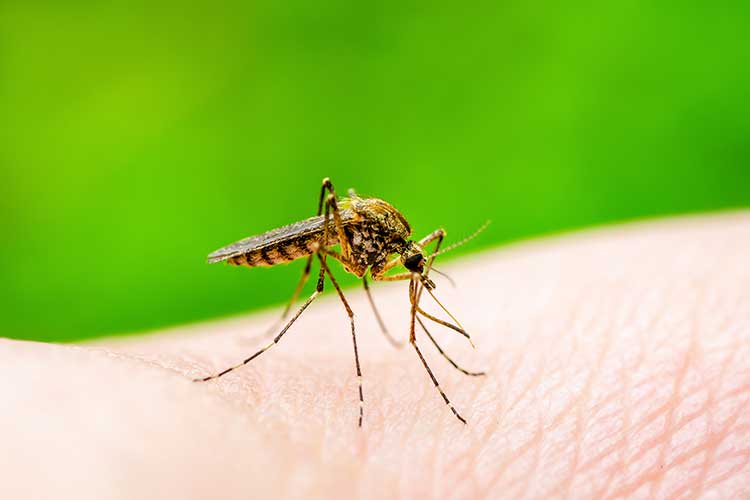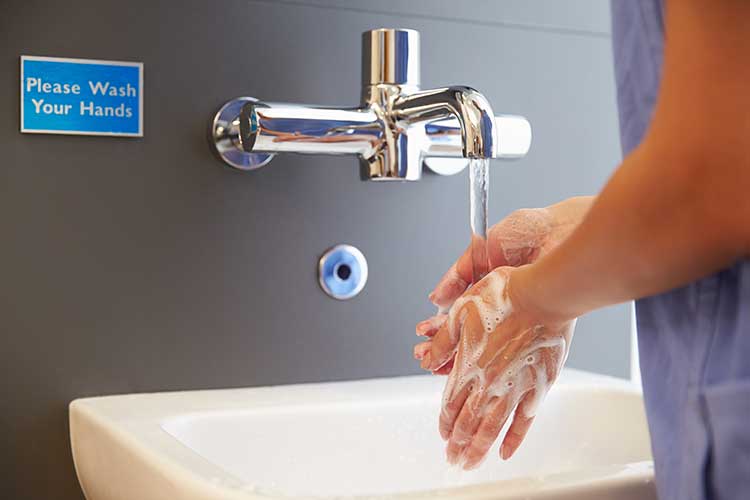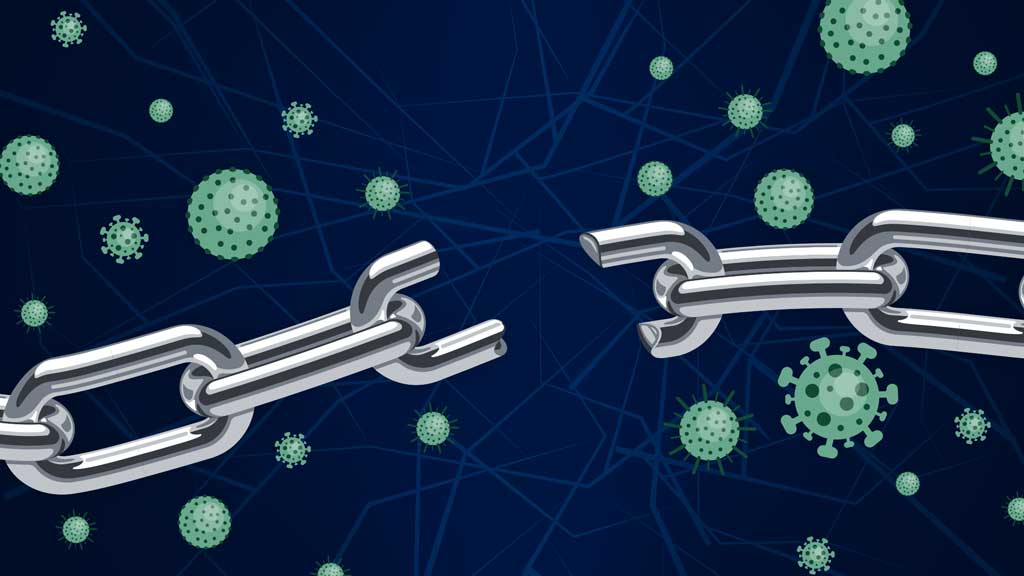As a healthcare worker, it’s crucial for you to update your knowledge on the spread and containment of infectious diseases, and what you can do to help break the chain of infection and contain the spread.
What is an Infectious Disease?
Infectious diseases are illnesses caused by pathogenic organisms, including viruses, bacteria, fungi and parasites. They may be transmitted by people, animals (zoonotic diseases) or environmental sources (e.g. water), depending on the specific pathogen (Mayo Clinic 2022).
Infectious diseases differ from non-infectious diseases (noncommunicable diseases) such as deficiency diseases, hereditary diseases and cardiovascular diseases, because rather than being related to internal factors such as lifestyle and genetics, they are caused by organisms that are not naturally found in the body (Aakash BYJU'S 2023).
The symptoms and severity of infectious diseases vary greatly depending on the pathogen causing them (Mayo Clinic 2022).
Types of Pathogens
Bacteria
Bacteria are small, singular cells that can survive in a variety of environments - sometimes in extreme cold or heat - without a living host. They exist in the body naturally and are mostly harmless, but they can sometimes cause infections. Bacterial infections can usually be treated with antibiotics (Tosh 2023).
Common bacterial infections include (but are not limited to):
- Ear infection
- Group A streptococcus
- Urinary tract infection
- Whooping cough.
(Healthdirect 2024)
Viruses
Viruses are tiny microbes, even smaller than bacteria. They comprise a segment of nucleic acid (DNA or RNA) surrounded by protein. Viruses invade and multiply within the cells of a living host and cannot survive on their own (Healthdirect 2024; Tosh 2023; NHGRI 2025).
Viral infections include (but are not limited to):
- Barmah Forest virus
- Bronchiolitis
- Chickenpox
- Common cold
- COVID-19
- Cytomegalovirus (CMV)
- Dengue
- Ebola virus disease
- Glandular fever
- Hepatitis A, B and C
- Herpes zoster
- Human immunodeficiency virus (HIV)
- Influenza
- Japanese Encephalitis
- Measles
- Murray Valley encephalitis
- Viral meningitis
- Norovirus
- Rabies
- Ross River virus
- Severe acute respiratory syndrome (SARS)
- Zika virus.
(Queensland Government 2023)
Fungi
Fungi are single-celled or multicellular organisms that reproduce using spores. They include moulds, yeasts and mushrooms (Biology Dictionary 2019).
There are millions of fungi species, most of which are harmless. Only a few hundred varieties can cause illness (CDC 2024a).
Fungal infections include (but are not limited to):
- Fungal nail infections
- Ringworm
- Candida infection (thrush).
(CDC 2024a)
Parasites

Parasites are organisms that live in or on another organism and feed on them. Their sizes variy, with some parasites large enough to be visible to the naked eye (Sepsis Alliance 2024).
Disease-causing parasites are separated into three main classes:
- Protozoa are microscopic and single-celled. They are most commonly transmitted between humans through a fecal-oral route.
- Helminths are parasitic worms that can generally be seen with the naked eye. They are also commonly transferred through a fecal-oral route.
- Ectoparasites (e.g. mosquitoes, lice, fleas and ticks) are organisms that attach and burrow into the skin. They can cause disease by themselves, but some ectoparasites, such as mosquitoes, can transmit other, more serious pathogens.
(CDC 2024b; Ho 2019)
Parasitic infections include (but are not limited to):
- Hookworm
- Lice infestation (body, hair, head, public)
- Malaria
- Pinworm
- Scabies
- Tapeworm.
(CDC 2025)
The Chain of Infection
The series of events enabling infections to spread between organisms is known as the ‘chain of infection’. There are six steps or ‘links’ in the chain that continue to repeat, and breaking any of these links will allow the chain to be dismantled (Reuter 2023).
1. Infectious Agent
The pathogen that causes the infection (Reuter 2023).
2. Reservoir
The habitat where the infectious agent is living and multiplying. This can be a human, animal, object or environmental source such as water or soil (Reuter 2023; ACSQHC 2024).
3. Portal of Exit
The means through which the infectious agent escapes from the reservoir. Examples include bodily excretions, open wounds and aerosols (Reuter 2023; ACSQHC 2024).
4. Mode of transmission
The way in which the infectious agent spreads from one place to another (Reuter 2023). Different infections use different modes of transmission.
These modes include:
Droplet transmission
The infectious agent spreads through large respiratory droplets in the air, which are then breathed in by another person. These droplets are released when an infected person coughs, sneezes or talks, travelling a short distance (about one metre) before falling to the ground. They may also contaminate nearby surfaces. If an uninfected person makes contact with these contaminated surfaces and touches their eyes, nose or mouth, this may also result in transmission (SA Health 2022; ACSQHC 2024).
Airborne transmission
Similarly to droplet transmission, the infectious agent spreads through respiratory droplets from an infected person. However, these droplets are much smaller in size, meaning they can stay suspended in the air for a longer period of time and be dispersed by air currents. Consequently, the air in the room of someone who has an airborne infection may be contaminated (SA Health 2022; ACSQHC 2024).
Direct contact
The infectious agent is spread through direct contact with an infected person/animal or their bodily fluids. This can include:
- Touching an infected person (skin-to-skin)
- Coming into contact with the bodily fluids of an infected person through activities such as kissing, breastfeeding or sexual intercourse
- Bodily fluids from an infected person entering the bloodstream of an uninfected person (through needles or breaks in the skin)
- Being bitten or scratched by an infected animal, or touching their waste.
(SA Health 2022; ACSQHC 2024)
Indirect contact
An uninfected person makes physical contact with a contaminated surface. A common example of this is faecal-oral spread, where tiny amounts of faeces from an infected person’s hands contaminate another surface. An uninfected person makes contact with this surface and then touches their mouth, allowing the particles of faeces to enter their body (SA Health 2022; ACSQHC 2024).

Insect transmission
Parasites such as mosquitoes and ticks may be carriers (‘vectors’) for other disease-causing pathogens such as malaria (SA Health 2022).
Food transmission
Some infectious agents can contaminate food or water, resulting in infection when it is consumed (SA Health 2022).
5. Portal of Entry
The means through which the infectious agent enters the new host. Depending on the mode of transmission, this can occur via:
- Open wounds or cuts
- The respiratory tract
- Mucous membranes
- Medical instruments placed into the body.
(Reuter 2023; ACSQHC 2024)
6. Susceptible Host
An uninfected individual who is susceptible to developing an infection when the infectious agent enters their body. Depending on the individual and the invading pathogen, they may be able to fight off the infection. Those who are more susceptible include:
- Very young children
- Older adults
- Immunocompromised people
- People who are ill
- People with a chronic health condition.
(Reuter 2023)
Preventing Infection Transmission (Breaking the Chain)

In order to manage and prevent the spread of infectious diseases, it’s crucial to interrupt the chain of infection at any of the six links.
The specific preventative measures used will depend on the pathogen and its mode of transmission. However, the following list offers some suggested strategies for breaking the chain of infection at each link.
Note: Infectious agents may still be present even if preventative measures are taken. However, the more measures implemented, the easier it will be to interrupt links in the chain. Prevention is most effective when a combination of measures is used.
| Stage of the chain | How to disrupt it |
|---|---|
| 1. Infectious agent | |
| 2. Reservoir |
|
| 3. Portal of exit |
|
| 4. Mode of transmission |
|
| 5. Portal of entry |
|
| 6. Susceptible host |
|
(APIC 2016)
Test Your Knowledge
Question 1 of 3
True or false: Bacteria need a living host to survive.
Topics
Further your knowledge
References
- Aakash BYJU'S 2023, Difference Between Communicable and Non-Communicable Diseases, BYJU'S, viewed 3 April 2025, https://byjus.com/neet/difference-between-communicable-and-non-communicable-disease/
- Association for Professionals in Infection Control and Epidemiology 2016, Break the Chain of Infection, Association for Professionals in Infection Control and Epidemiology, viewed 3 April 2025, https://infectionpreventionandyou.org/wp-content/uploads/2016/09/Break-the-Chain-of-Infection.pdf
- Australian Commission on Safety and Quality in Health Care 2024, Infection Prevention and Control Workbook, Australian Government, viewed 3 April 2025, https://www.safetyandquality.gov.au/publications-and-resources/resource-library/infection-prevention-and-control-workbook-2024
- Biology Dictionary 2019, Fungi, Biology Dictionary, viewed 3 April 2025, https://biologydictionary.net/fungi/
- Centers for Disease Control and Prevention 2024a, About Fungal Diseases, U.S. Department of Health & Human Services, viewed 3 April 2025, https://www.cdc.gov/fungal/about/index.html
- Centers for Disease Control and Prevention 2024b, About Parasites, U.S. Department of Health & Human Services, viewed 3 April 2025, https://www.cdc.gov/parasites/about/?CDC_AAref_Val=https://www.cdc.gov/parasites/about.html
- Centers for Disease Control and Prevention 2025, A-Z Index of Parasitic Diseases, U.S. Department of Health & Human Services, viewed 3 April 2025, https://www.cdc.gov/parasites/az/index.html
- Healthdirect 2024, What is the Difference Between Bacterial and Viral Infections?, Australian Government, viewed 3 April 2025, https://www.healthdirect.gov.au/bacterial-vs-viral-infection
- Ho, V 2019, ‘What are Parasites and How do They Make us Sick?’, The Conversation, 18 November, viewed 3 April 2025, https://theconversation.com/what-are-parasites-and-how-do-they-make-us-sick-121489
- Tosh, PK 2023, Bacterial vs. Viral Infections: How do They Differ?, Mayo Clinic, viewed 3 April 2025, https://www.mayoclinic.org/diseases-conditions/infectious-diseases/expert-answers/infectious-disease/faq-20058098
- Mayo Clinic 2022, Infectious Diseases, Mayo Clinic, viewed 3 April 2025, https://www.mayoclinic.org/diseases-conditions/infectious-diseases/symptoms-causes/syc-20351173
- National Human Genome Research Institute 2025, Virus, U.S. Department of Health and Human Services, viewed 3 April 2025, https://www.genome.gov/genetics-glossary/Virus
- Queensland Government 2023, Viral Infections, Queensland Government, viewed 3 April 2025, https://www.qld.gov.au/health/condition/infections-and-parasites/viral-infections
- Reuter, MS 2023, ‘4.2 Chain of Infection’, in Nursing Assistant, Chippewa Valley Technical College, Wisconsin, viewed 3 April 2025, https://wtcs.pressbooks.pub/nurseassist/chapter/4-2-chain-of-infection/
- SA Health 2022, Ways Infectious Diseases Spread, Government of South Australia, viewed 2 April 2025, https://www.sahealth.sa.gov.au/wps/wcm/connect/public+content/sa+health+internet/conditions/infectious+diseases/ways+infectious+diseases+spread
- Sepsis Alliance 2024, Parasitic Infections, Sepsis Alliance, viewed 3 April 2025, https://www.sepsis.org/sepsisand/parasitic-infections/
 New
New 

